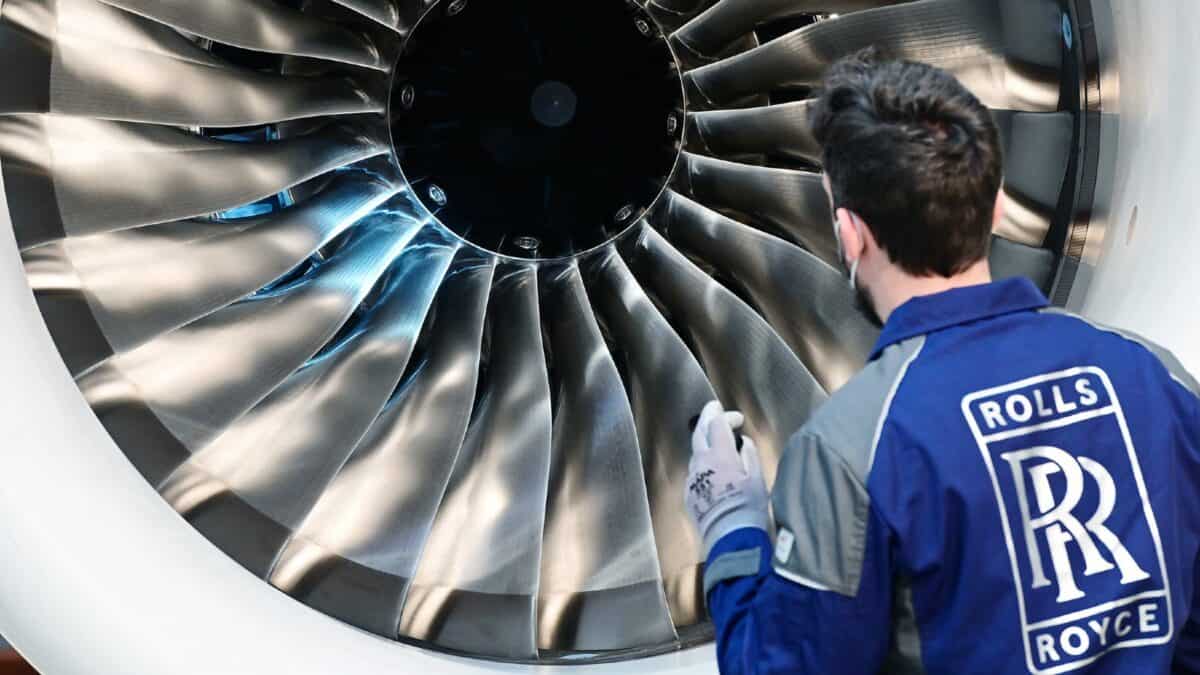Lately, shares in Rolls-Royce (LSE: RR) have been hovering around the £4 mark. For investors who bought them for less than a tenth of that price in 2020, that marks an incredible increase in value.
The aerospace engineer was the best-performing share in the FTSE 100 index last year. So far this year, Rolls-Royce shares are up by a third again.
But is Rolls-Royce really worth 10 times what it was four years ago? Or are the shares now overvalued?
How to value Rolls-Royce
There are different ways to value companies. For a mature business like Rolls-Royce, a common one is the price-to-earnings (P/E) ratio.
In isolation, a P/E ratio does not tell the full story. It is also important to consider such things as a firm’s balance sheet, for example. Rolls has been cutting its debt, but still had £2bn of net debt at the end of last year.
Still, a P/E ratio can be helpful. The reason many investors like it as a valuation metric is its simplicity. It basically states how many years it would take for a purchaser to pay down the cost of purchasing a company outright, by using its earnings at their current level.
In practice, things can be more complex. Bid premiums, debt costs, and fluctuating earnings mean that if I bought a company with a P/E ratio of 10 (for example) I may not actually be able to fund my purchase just by using the next decade of its earnings.
But the metric can be a useful yardstick. The lower it is, the cheaper a share is generally considered to be.
P/E ratio looks reasonable
At the moment, the P/E ratio for Rolls-Royce shares is 13. That looks reasonable to me. I do not see it as a screaming bargain, but a fair price for the company with its proprietary technology, large installed customer base, and strong sales pipeline.
That P/E ratio is based on statutory basic earnings per share. Last year, underlying earnings per share were less than half the statutory equivalent, meaning on that basis the P/E ratio would be closer to 30. I prefer the statutory earnings per share basis, though, as in general I think it more accurately reflects a business’ actual performance compared to underlying earnings per share.
Rolls has announced aggressive medium-term plans that ought to see earnings per share grow if it succeeds. On that basis, the prospective P/E ratio could be in the high single digits. So despite Rolls-Royce shares soaring, they do not necessarily look overvalued to me.
What comes next?
But for now, those targets are just targets. Rolls, a company with a long history of significant swings in earnings from one year to the next, has to prove that it can deliver.
If it does so, I see the current price as fair and perhaps even cheap.
But, in my view, it offers me little margin of safety as an investor if earnings do not grow as hoped. That could happen due to risks outside the company’s control, like a sudden slowdown in civil aviation demand due to a pandemic or terrorist attack. We have seen this repeatedly before.
On that basis, I will not be buying Rolls-Royce shares.








